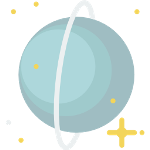Planet Uranus | The Planet Lying On Its Side
Orbiting The Sun Like A Rolling Ball!
Uranus is one of the most distant planets from the Sun and unique as it orbits on its side! Known as an ‘Ice Giant’ (like Neptune), it has a rocky core surrounded by water, ices and an atmosphere composed of hydrogen, helium and methane. It’s this methane which gives the planet its distinctive blue-green colour! A system of 13 faint rings and 27 moons accompany Uranus during its 84 year long orbit of the Sun!
Fast Summary Facts About Uranus!
- Discovered: March 13th, 1781 by William Herschel
- Name Origin: Named after the Greek god of the sky
- Size: Diameter of 50,724 km (31,518 miles)
- Planet Rank: 3rd largest
- Number of Moons: 27 known moons
- Surface Gravity: 0.89 g (11% less than Earth’s gravity!)
- Orbital Radius: 19.2 AU (19 times the Earth-Sun distance)
- Length Of Year: 84 years (30,689 days!)
- Rotational period: 17 hours 14 ½ minutes
- Density: 1.27 g/cm3
- Atmosphere: Composed of hydrogen, helium (& some methane)
- Surface Temperature: - 210 °C (65 K)
Cool Fun Facts About The Strange And Distant Uranus!
- The average distance between the Sun and Uranus is 2.9 billion kilometres (1.8 billion miles)!
- Due to its faint slow motion across the sky, it was never recognised as a planet resulting in it becoming the first planet to be discovered by telescope!
- Uranus is very difficult to see with the naked eye, so you’ll need binoculars or a telescope to see the faint sky-blue disk!
- Scientists aren’t entirely sure where and how the ice giant Uranus (and Neptune) formed. It is currently believed it formed closer to the Sun, and subsequently migrated outwards into its current orbit.
- Uranus is the seventh planet from the Sun and considered an ice giant (like Planet Neptune) due to its higher proportion of volatile ices.
- The planet is believed to have a rocky-iron core, surrounded by water and ammonia with a thick atmosphere of predominately hydrogen (83%), helium (15%) and methane which gives the planet its distinctive blue-green colour!
- Like other gas giants, the planet doesn’t have a ‘surface’ as it is mostly swirling gases and fluids.
- Due to its composition of ices, gases and volatiles, Uranus is the second least dense planet after Saturn.
- Despite this, the planet still has 14 ½ times more mass than the Earth (slightly less than Neptune) and is roughly 4 times the size of Earth.
- Uranus is unique as it is the only planet or moon, to orbit spinning on its side. This is due to its axial tilt of 98 degrees! Earth only has an axial tilt of 23 degrees.
- It is believed that early in the Solar System’s formation, a large Earth-sized planet collided with Uranus, causing it to tip onto its side!
- Since Uranus’ orbit around the Sun lasts 84 Earth years, each pole gets 42 years of daylight and 42 years of darkness! Isn’t that weird?!
- All of Uranus’ 27 moons are named after characters from the works created by William Shakespeare and Alexander Pope.
- Thanks to astronomers using power telescopes, the Voyager 2 spacecraft and the Hubble Space Telescope, a system of thirteen rings have been discovered.
- Auroras that have been observed on Uranus are not in line with the poles (like they are on Earth, Jupiter and Saturn) due to the unusually lopsided magnetic field.
- During Voyager 2's flyby in 1986, it made many discoveries related to the planet, its moons and faint rings.
- Voyager 2 is still the only space probe to have visited Uranus. It is hoped one day we will send another mission which may even enter orbit around the ice giant to study this fascinating world for several years!
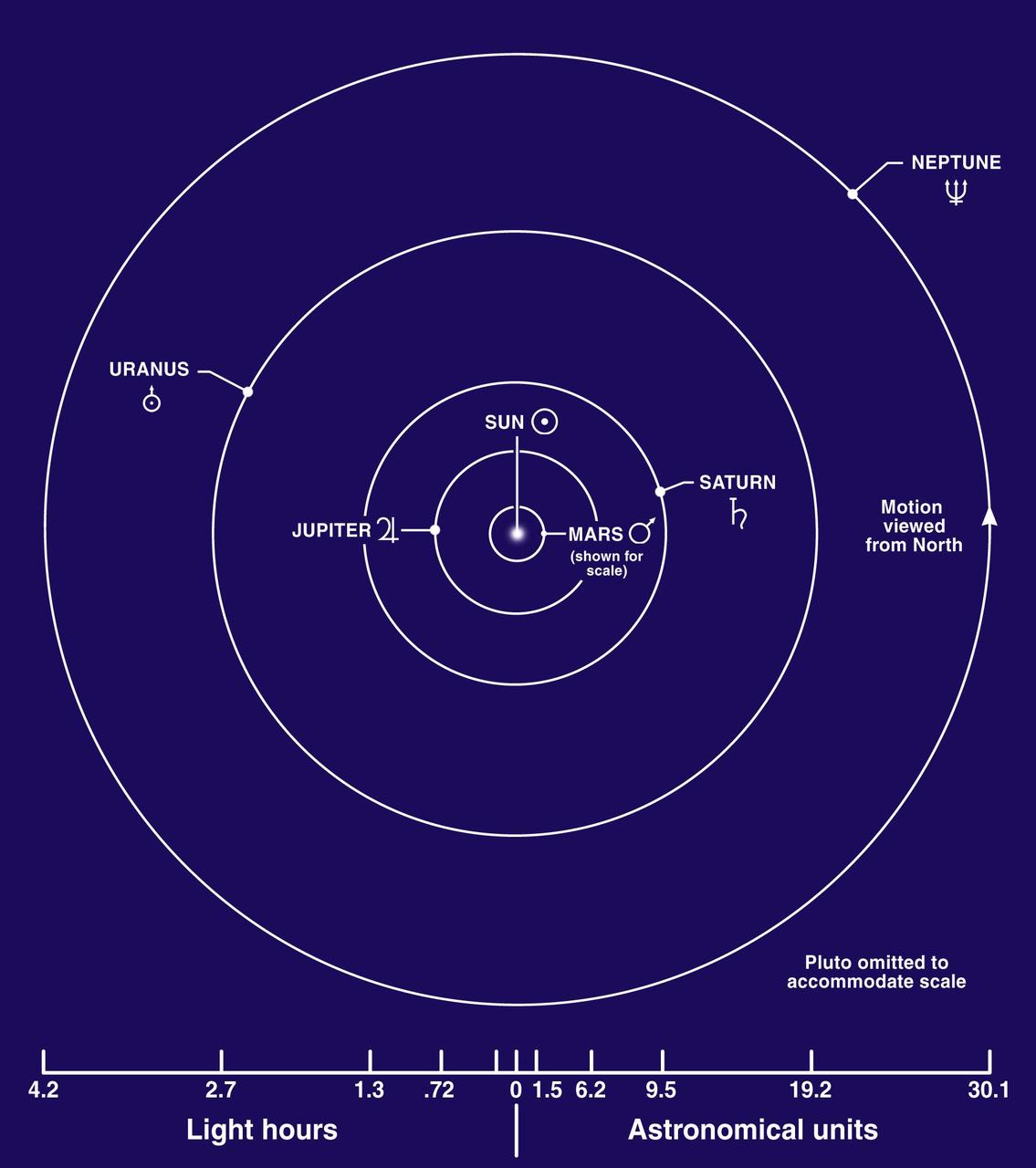
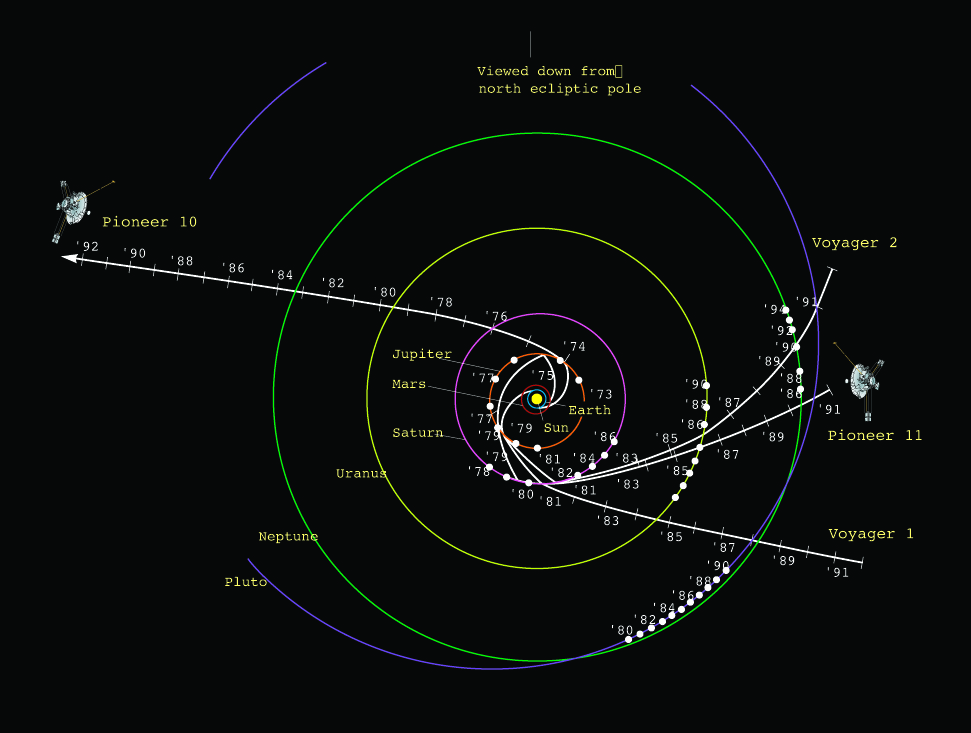
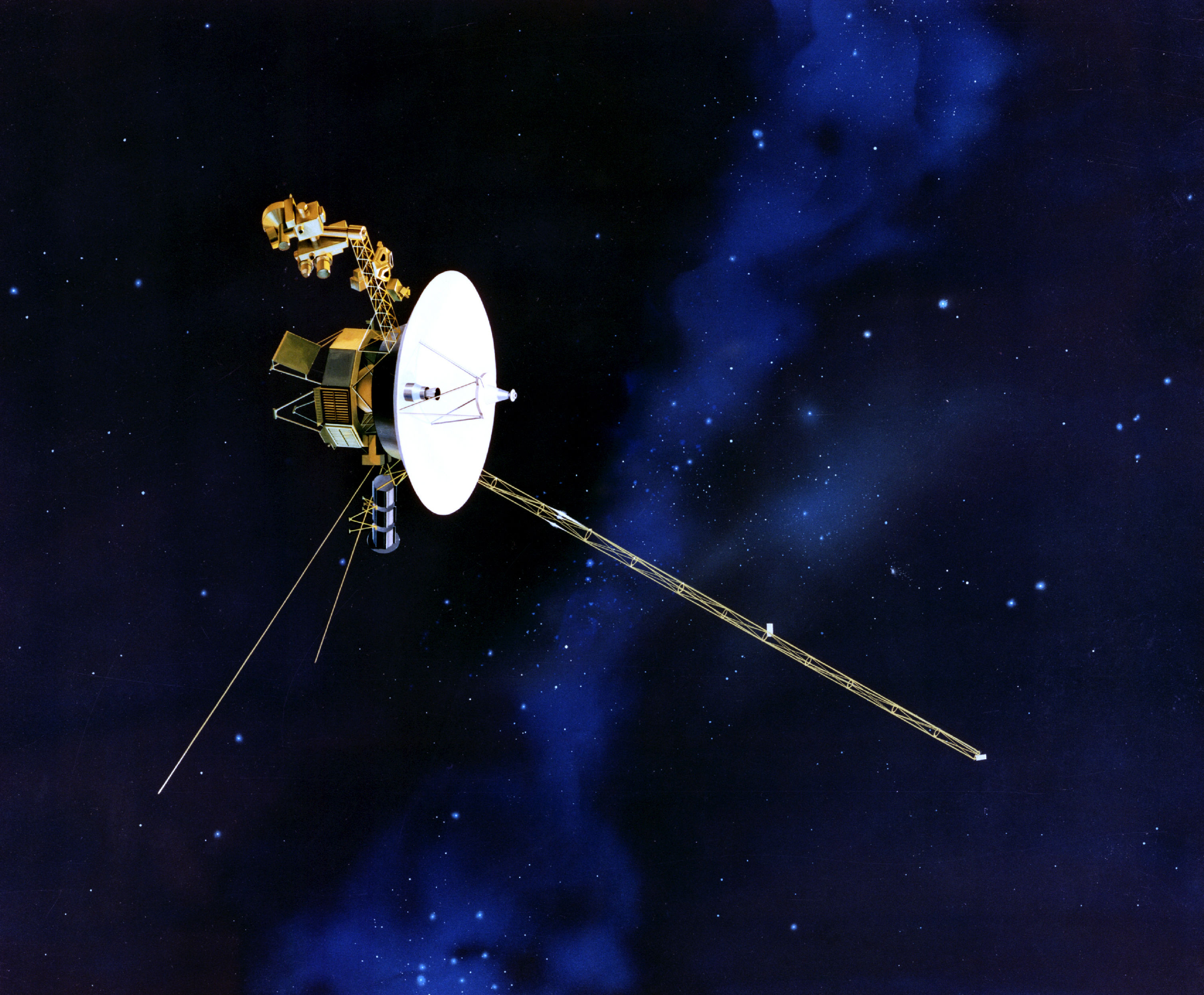
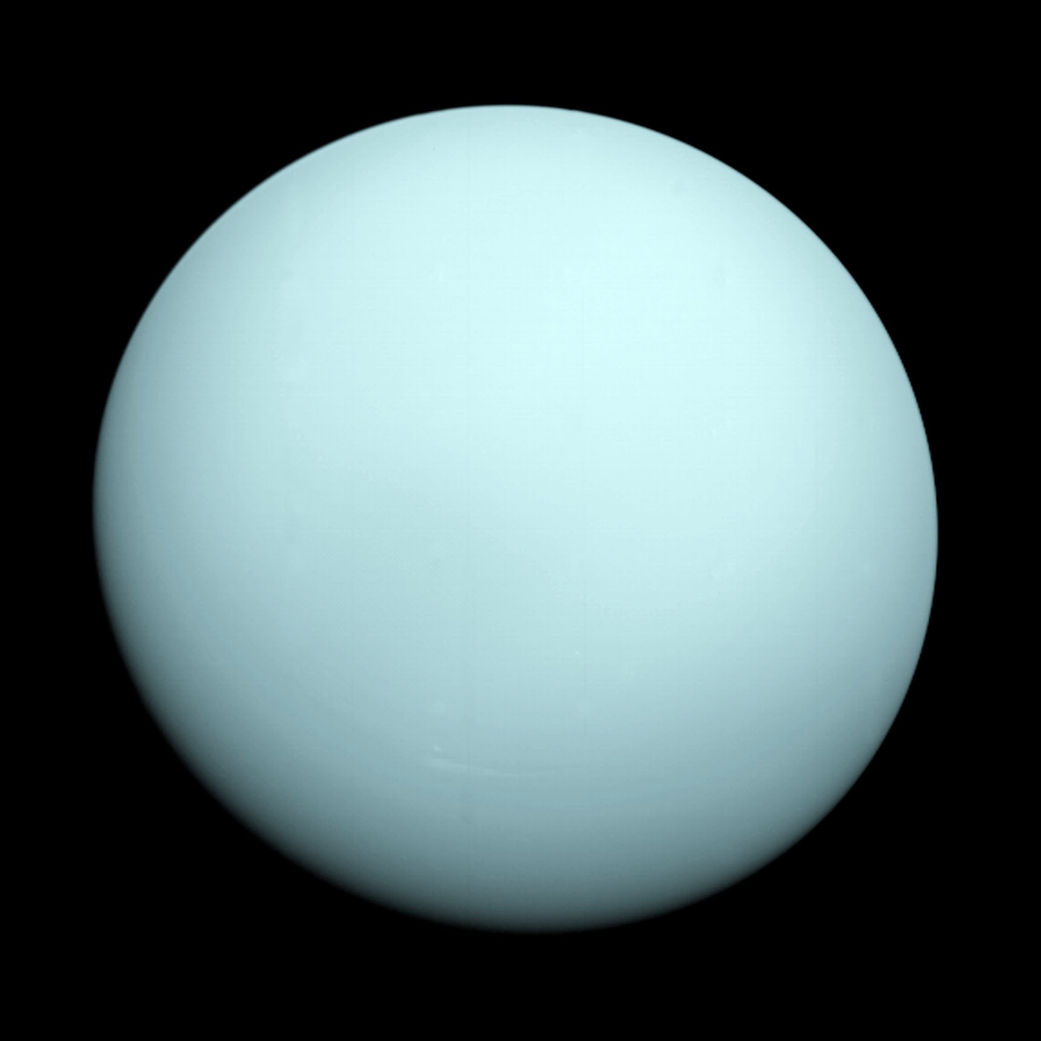
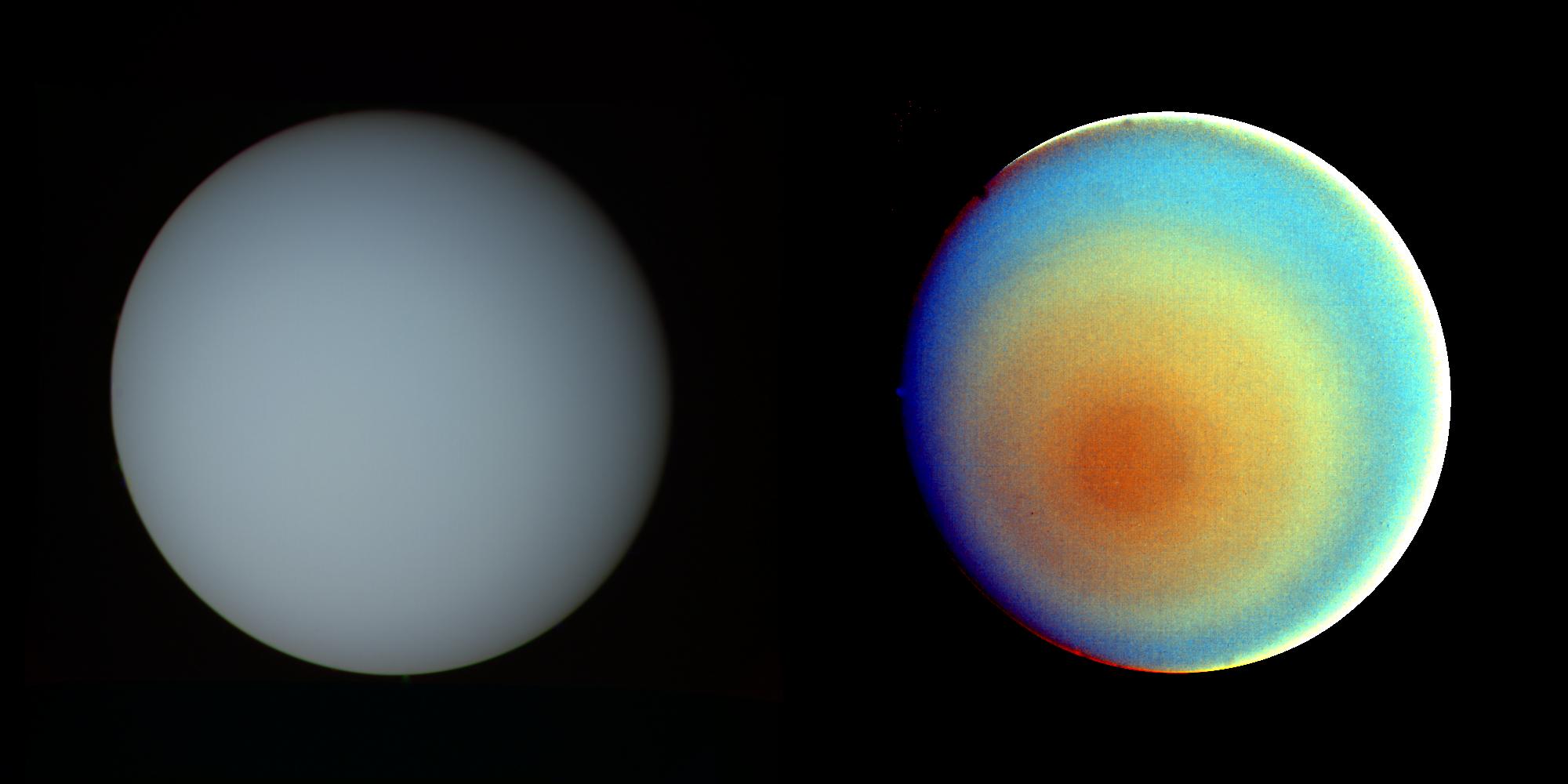
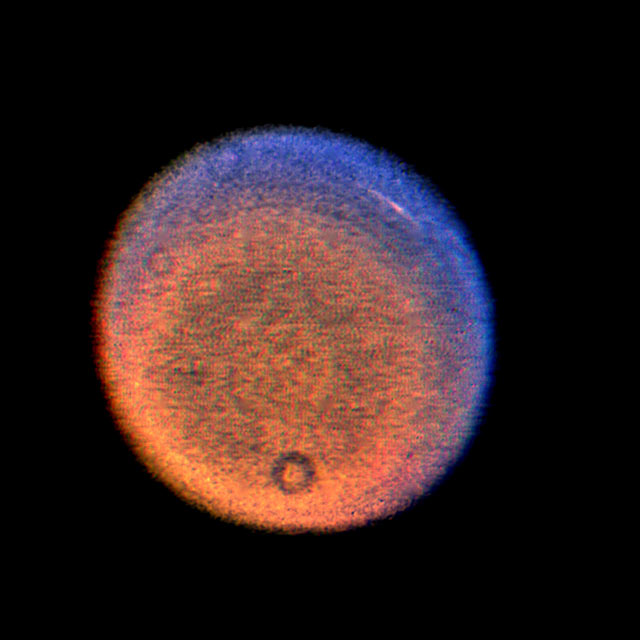
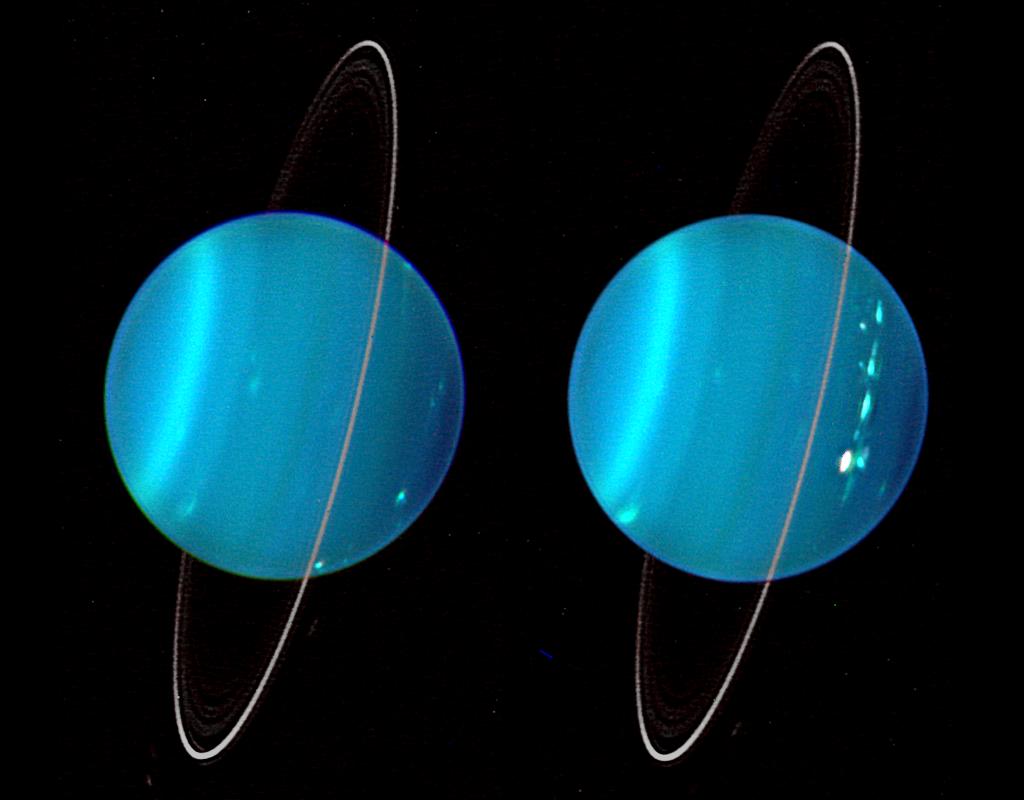
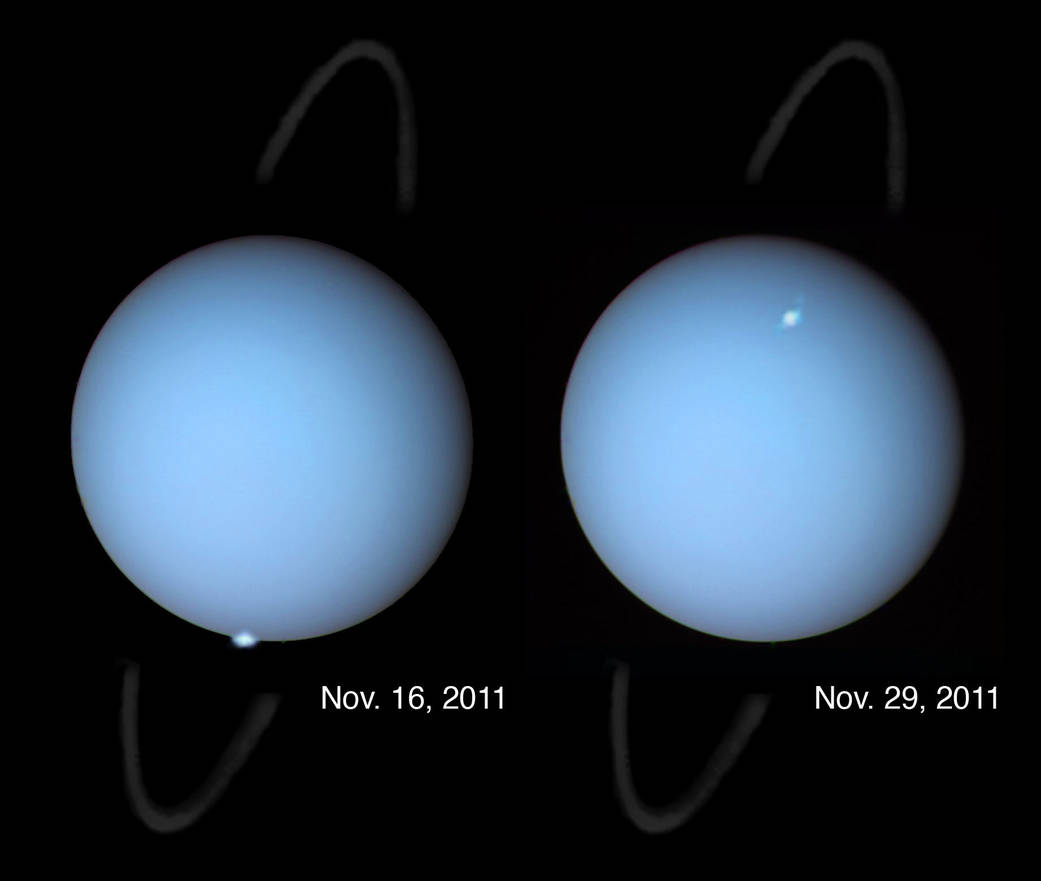
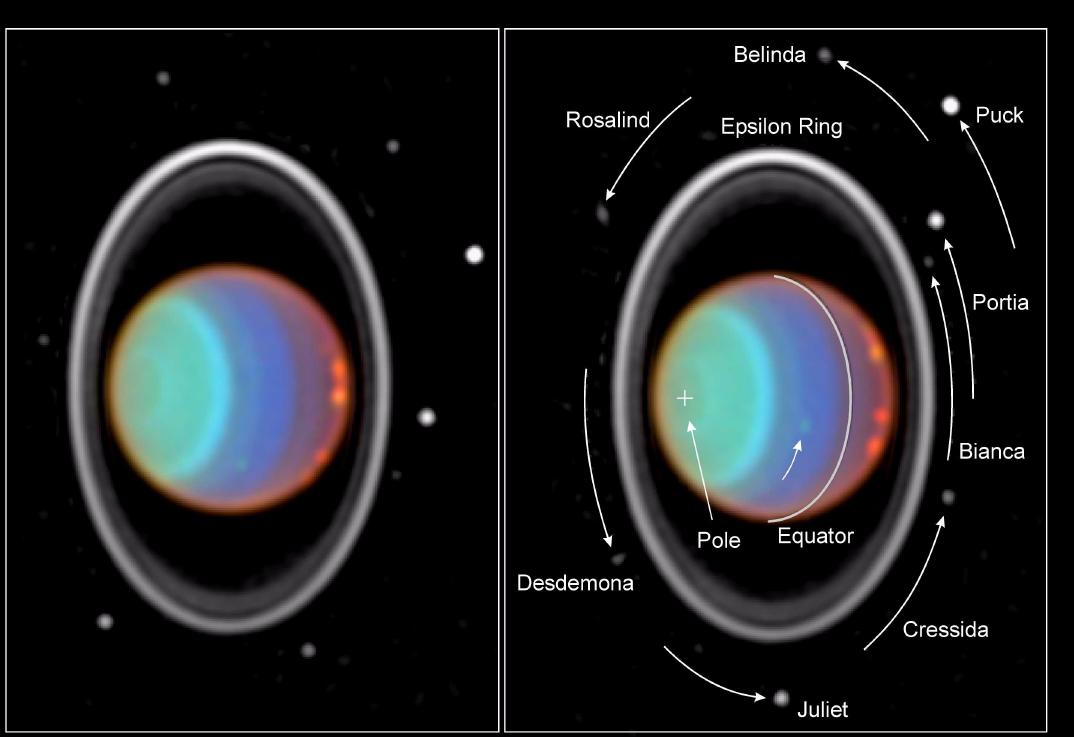
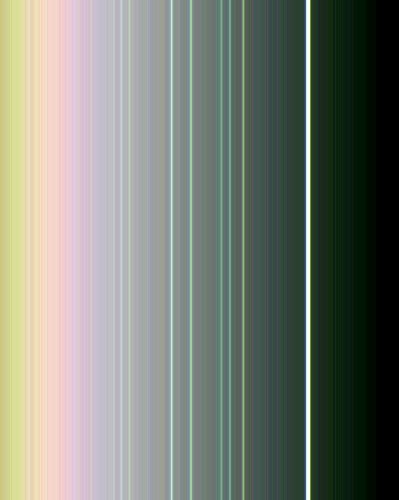
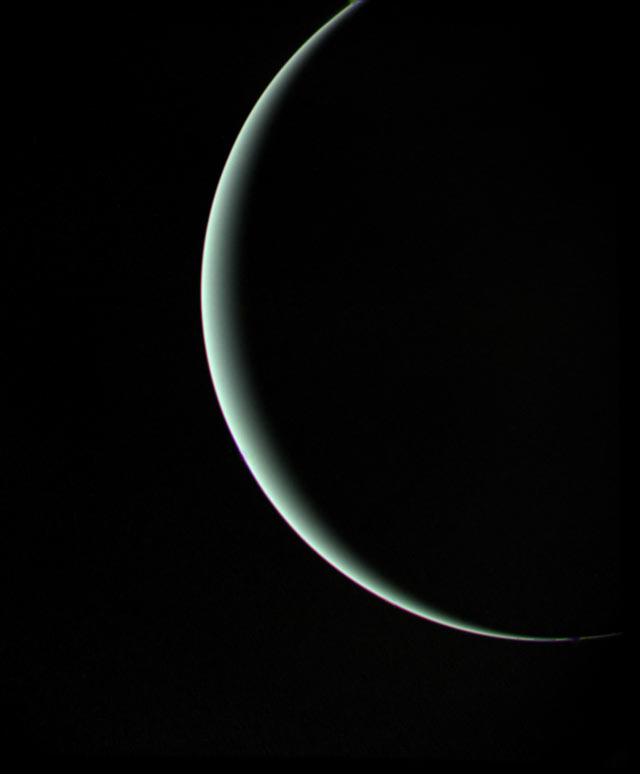
Relative Orbits
Pioneer And Voyager Probe Paths
Deep Space Probe
Close Up View
Uranus From Voyager 2
Uranus Analysis
Uranus From Earth
Uranus From Afar
Uranus And Its Inner Moons
Thin Rings
Crescent Uranus













